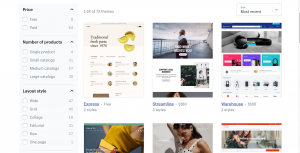
A few weeks ago, Facebook dropped another one of its algorithm “bombs.” The social media juggernaut announced it would now heavily prioritize posts shared and published by Facebook friends, rather than those posted by pages. The change has enormous implications for businesses that have been using Facebook to engage with fans. Therein lies the problem. Is being reliant on a media powerhouse’s control a gamble?
Facebook engineer Lars Backstom said the change was in response to Facebook users’ sense of what I call “friend and family” FOMO — they were missing important posts from people they know and care about. We can’t fault Facebook for protecting the Facebook-owned community. It’s essential that the site maintain its credibility, even if fiduciary responsibilities to shareholders tend to be extra motivation.
Translation to marketers: reach will decline. Again. We all remember “reachpocalyse” from 2014, so this news has a sting of familiarity. Today, most of the brands I meet with grimly say their fan reach on Facebook hovers around less than 1%. Social media guru Jay Baer perhaps said it best: “Facebook cares about its business, not about your business.” It’s not irony, but brilliance, that Facebook’s declining organic reach for brand pages plummets as Facebook’s stock prices rise from $ 50 to $ 70 per share.
Facebook attempts to soften the blow to marketers by giving the ultimate easier-said-than-done task: produce great content that people want to share. It’s true that brands have made progress when it comes to dedicating resources to content marketing. Thirty-seven percent of B2C marketers have a documented content marketing strategy, up from 27% last year. But is it enough? Even with an increased investment in better content, it still means the competition for a brand to directly engage with consumers is astounding.
Here are four things to help secure your space.
Always empower consumers to create original content.
User-generated content is a must in any brand initiative. Studies have found user-generated content is generating 28% more engagement. When Chobani launched its Chobani Love Story campaign, they started by asking their loyal customers to submit videos and images of their Chobani love, which cascaded into a series of billboards and television ads that drove enormous sales for the brand in a highly competitive space. The brand embraced a “celebration of the passion people feel about our products.” When it comes to branded content, consumer content must take center stage.
Shareable customer service.
Zappos CEO Tony Hsieh said that Zappos intentionally budgeted for top-notch customer service, sacrificing advertising dollars, knowing the viral effect of happy customers talking. This leads to an army of advocates who can facilitate sharing. One of the big challenges marketers face is making their products shareable in the social environment. Investing in extraordinary customer service is a spark to ignite conversation.
Establish emotional connections.
If Facebook is going to ensure that friends’ posts appear at the top, content will need to address the reason people share on Facebook in the first place. Studies have shown Facebook as tapping into the brain’s pleasure center. We like identity, empathy and practicality. These should always be attributes of published content.
Change the messenger.
As Jay Baer so eloquently pointed out, your employees, customers and advocates are the best ways for you to distribute your message on Facebook. There needs to be a fundamental switch to let the consumer do the talking, posting, chatting and uploading for the brand. This strategy creates a more effective and affordable way to have a strong and visible Facebook presence.
Facebook’s news feed change should not come as a shock to marketers, nor should it come with disappointment. It’s simply a sign of the industry shifting. And as Facebook goes, so goes the social media world. This will likely set the tone for the rest of the social marketing world. Brands that wish to participate in social media will need to readjust their strategy. Rather than pushing content, marketers must pull content from their own consumers.
Digital & Social Articles on Business 2 Community(21)
Report Post







